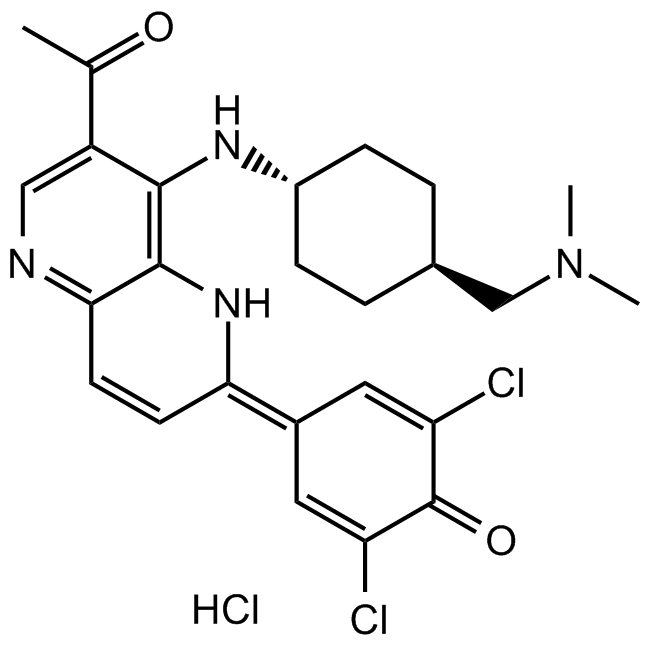OTSSP167 hydrochloride |
| Katalog-Nr.GC12155 |
OTSSP167 (OTS167) Hydrochlorid ist ein hochpotenter und ATP-kompetitiver MELK-Inhibitor mit einem IC50-Wert von 0,41 nM.
Products are for research use only. Not for human use. We do not sell to patients.

Cas No.: 1431698-10-0
Sample solution is provided at 25 µL, 10mM.
OTSSP167 is an inhibitor of maternal embryonic leucine zipper kinase(MELK) with IC50 value of 0.41nM [1].
MELK belongs to the AMPK serine/threonine kinase family and involves in the mammalian embryonic development. It overexpresses in various types of human cancer. OTSSP167 is synthetized from a compound which is a hit of a high-throughput screening. In vitro anti-proliferative assay shows that OTSSP167 suppresses cell growth of various cancer cell lines, such as A549(IC50=6.7nM), T47D(IC50=4.3nM), DU4475(IC50=2.3nM) and 22Rv1(IC50= 6.0nM). In vivo assay also shows OTSSP167 can significantly suppress tumor growth in the xenograft model using various cancer cell lines. The effects are observed by both intravenous administration and oral administration. When investigating the substrates of MELK, OTSSP167 is found to inhibit the phosphorylation of DBNL and PSMA1 in vitro. Since PSMA1 is essential for survival of cancer cells, the reduction of phosphorylated PSMA1 caused by OTSSP167 can subsequently suppress mammosphere formation of cancer stem cells [1].
References:
[1] Suyoun Chung, Hanae Suzuki, Takashi Miyamoto et al. Development of an orally-administrative MELK-targeting inhibitor that suppresses the growth of various types of human cancer. Oncotarget. 2012, 3: 1629-1640.
Average Rating: 5 (Based on Reviews and 25 reference(s) in Google Scholar.)
GLPBIO products are for RESEARCH USE ONLY. Please make sure your review or question is research based.
Required fields are marked with *




















